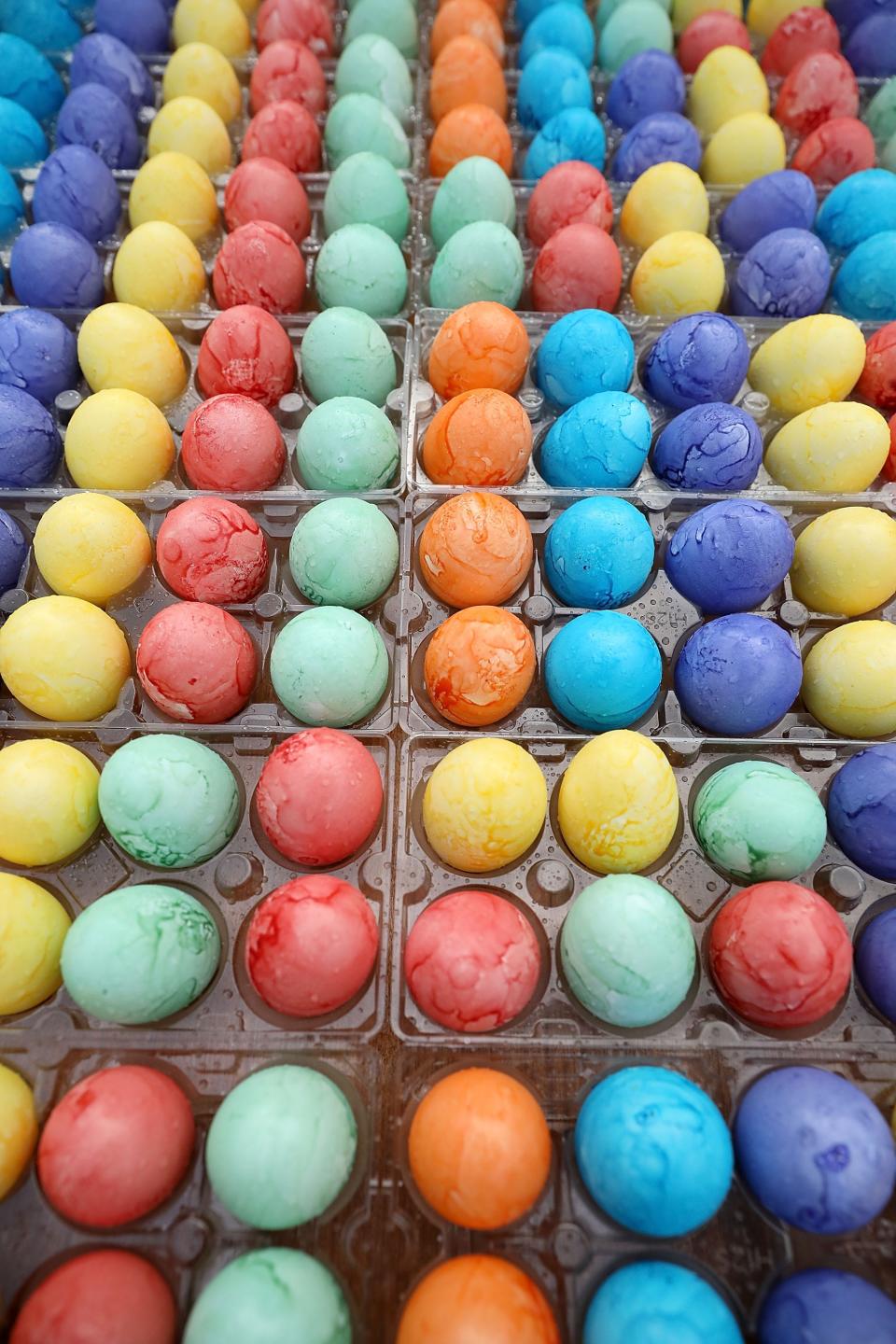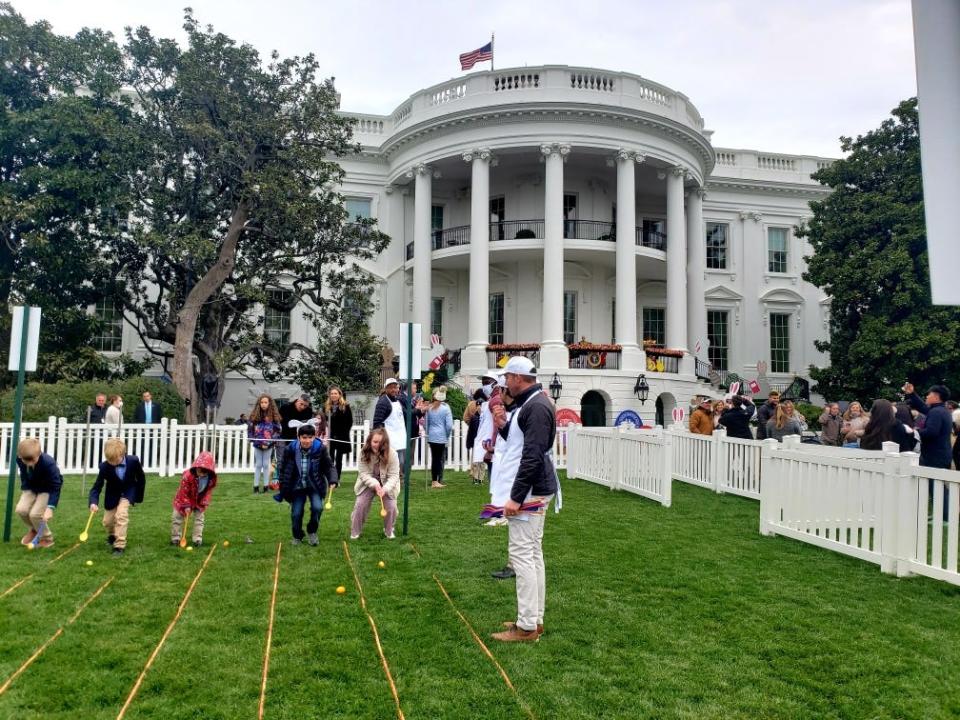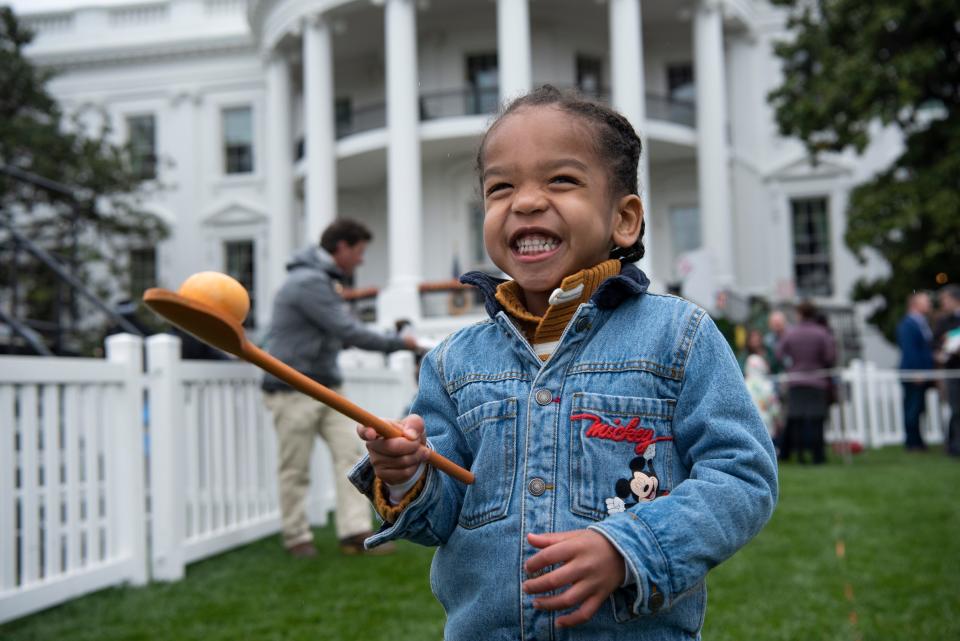How the White House gets 30,000 eggs for its Easter Egg Roll
If juggling Easter preparations for one household seems daunting, imagine organizing it for the White House, a task that calls for 30,000 hard-boiled eggs.
In North Carolina, Braswell Farms this year handled both the raising and the hand-dyeing of all 30,000 eggs destined for the annual White House Easter Egg Roll.
Behind the scenes, the American Egg Board has handled the coordination of the annual White House event's egg details, from the Easter eggs themselves to the various egg-themed dishes and events, since the Ford administration.

"We're the oldest standing partner with the White House on this event, and you can't have Easter without the eggs," said Emily Metz, president and CEO of the American Egg Board.
Farmers will deliver the dyed eggs straight to the event, underscoring that there are actual people behind the millions of eggs Americans will purchase, eat and paint this Easter.
"They see it as a profound honor to participate in the event," Metz said. "They're going to drive the truck up themselves and get to see the eggs on the lawn. They're just really touched."

It's also the charge of the Egg Board to stock the table with food. Since the White House event is a full 12 hours long, dishes arrive in waves throughout the day. Breakfast brings custard tarts and mini omelets. Once breakfast is cleared, classic egg salad sandwiches and savory quiches arrive. That's followed by sweet dishes including macarons, homemade marshmallows and other egg white-based desserts.
None of the Easter eggs on the White House lawn will be repurposed as food, however. At room temperature, hard-boiled eggs are unsafe to eat after two hours. If they're sitting in the sun, that time gets cut in half.
"But don't worry, they're not going to go to waste," Metz said.
The American Egg Board works with Veteran Compost, a DC-area composting service staffed by U.S. veterans.
"All 30,000 eggs used for the activities on the White House lawn are going to be picked up by this organization and composted for garden centers and tree planting," Metz said.
The American Egg Board will also match the 30,000 donated eggs used on the lawn by giving an additional 30,000 eggs to the Capital Area Food Bank in Washington.

"This is part of a nationwide hunger relief effort our farmers called Fighting Hunger by the Dozens," Metz said. "Cumulatively, we will give more than 5.5 million eggs this holiday springtime season to food banks nationwide."
As part of the annual White House event, the Egg Board presents the First Lady with a commemorative egg, and this year will be no different, Metz said.
"This is the 46th year we're presenting an egg on behalf of America's egg farmers," Metz said.

This year, Dr. Jill Biden's egg will be created as a tribute to the First Lady's passion for education. Additionally, the Egg Board solicited the creation of 56 eggs, each styled after a different American state and territory, to be displayed in the East Wing of the White House.
Children from the Future Farmers of America Boys and Girls Club submitted designs for the eggs, with the winning design from each state provided to artists who specialized in using eggs as their canvas. The Egg Board calls them "eggers."

"And then they'll put that design on a real chicken egg and those will be displayed," Metz said. "So that'll be a little extra special thing this year on display at the White House."
Read on for egg safety tips and an egg salad recipe you can bring to your Easter table this year.
American Egg Board White House Egg Salad
This egg salad can be layered with crunchy lettuce on whole wheat toast for a simple sandwich or stuffed into cherry tomatoes for an appetizer.
Safety tips: Shell eggs and hardboiled eggs need to be returned to the refrigerator within two hours. But if the temperature is 85 degrees or above, the eggs need to be refrigerated within one hour. After eggs are refrigerated, it's important they stay that way. Maintaining a consistent, cool temperature is critical to safety. A cold egg left out at room temperature can sweat, facilitating bacteria growth.
Hard-boiled eggs spoil faster than fresh eggs because the protective layer is washed away during boiling. Be sure hard-boiled eggs are not left out of the refrigerator for more than two hours and always use them within one week.
Ingredients
6 large hard-boiled eggs
1/4 cup mayonnaise
2 teaspoons fresh lemon juice
1 tablespoon minced onion
1/2 cup finely chopped celery
Salt and pepper to taste
Lettuce leaves for serving
Instructions
Reserve and refrigerate 4 center egg slices for garnish, if desired. Chop the remaining eggs. Mix mayonnaise, lemon juice, onion, salt and pepper in a medium bowl. Add chopped eggs and celery. Mix well. Refrigerate, covered, to blend flavors. Serve on lettuce leaves, garnished with reserved egg slices.
Easy 12-minute method for hard-boiled eggs
Place eggs in a saucepan large enough to hold them in a single layer. Add cold water to cover the eggs by 1 inch. Heat over high heat just to boiling. Remove from the burner. Cover pan. Let eggs stand in hot water for about 12 minutes for large eggs (9 minutes for medium eggs; 15 minutes for extra large eggs). Drain. Shock the eggs in a bowl of ice water to cool them immediately. Hard-boiled eggs are easiest to peel right after cooling.
Very fresh eggs can be difficult to peel. To ensure easily peeled eggs, buy and refrigerate them a week to 10 days in advance of cooking. This brief “breather” allows the eggs time to take in air, which helps separate the membranes from the shell.
This article originally appeared on Nashville Tennessean: How the White House gets 30,000 eggs for its Easter Egg Roll

